Modern-day user documentation is a vibrant, extremely informative resource that all kinds of technology providers offer to users to help them achieve success with their product.
SaaS companies especially have a lot to gain from focusing on their user documentation and can draw some very valuable benefits from it.
The article you’re about to read discusses those benefits. So, let’s dive right in and discover why user documentation is important for SaaS companies.
Encourages Self-Service
The self-service approach is a major trend in contemporary customer support.
More and more companies are making significant investments in solutions that don’t require a human agent to resolve issues.
Rather, they arm customers with everything they need to use the product successfully and fix any problems that may arise independently.
It’s easy to see why companies are choosing this approach.
Traditional methods of support, such as phone, email, and live chat, typically do not produce instant solutions because users need to wait for the customer support rep to take their call or reply to their email.
On the other hand, self-service resources are always there for users, so they can quickly find instructions themselves, and figure out a solution.
This is why most customers have come to prefer self-service over live support. Today, most users will try to resolve their issues on their own before contacting support.

Source: Archbee
They do this by seeking answers online, which is why user documentation represents the perfect self-service customer support channel.
By accessing user documentation on the product website, in the form of user instructions, FAQs, and troubleshooting guides, users have a significant chance of resolving any problems they face and continuing to use the product successfully.
For example, have a look at Ahrefs’ user documentation below. This is the part of the user documentation that concerns account access and billing.
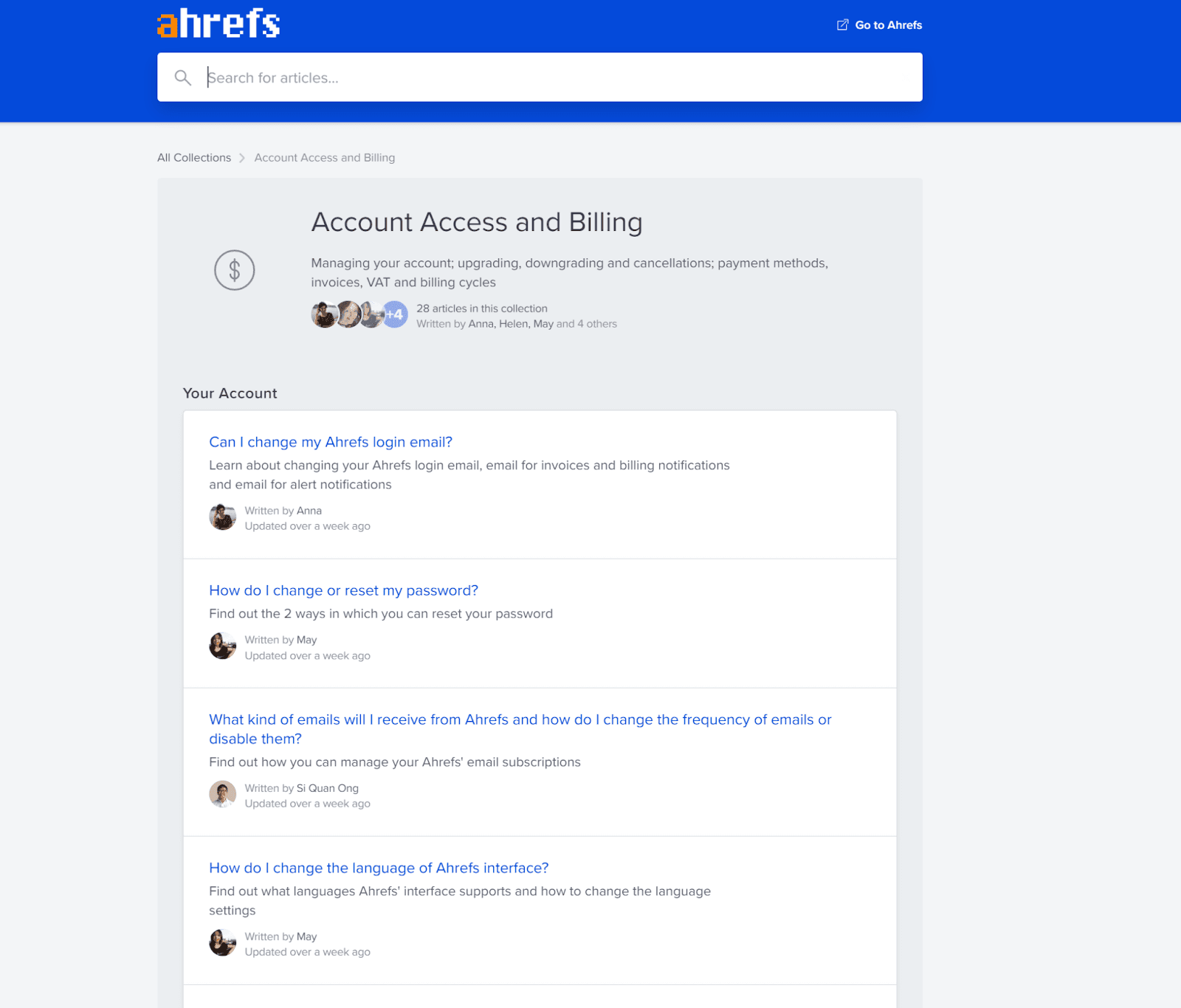
Source: help.ahrefs
As you can see, the articles are written around questions that users might bring to customer support reps expecting them to resolve the issues for them.
However, instead of calling customer service, users can turn to Ahrefs documentation to simply find the exact question they want to ask and then follow the instructions outlined in the document.

Source: help.ahrefs
The best user documentation, like Ahrefs’ above, uses clear, concise instructions and annotated screenshots and other media to ensure that the customer has no problem solving their issue.
The fact that users prefer self-service support has been well-documented in recent times.
For example, Activision, the game development giant, is a company that closely monitors how their customers interact with customer support.
They offer phone support, as well as social media outreach options, and, yes, a self-service help portal for user inquiries.

Source: support.activision
Activision’s users have a clear preference.
As many as 82% of their customers use the self-service option, 10% of them use social media, and a mere 8% get on their phones to call support reps.
So if you want to provide your customers with support that’s in line with their preferences, consider investing in self-service channels such as user documentation.
Your customers will definitely appreciate you for it.
Reduces Support Costs
There is another important insight to gain from Activision’s experience with self-service customer support.
Once this type of support was implemented, the company saw more than one benefit, as Tim Rondeau, senior director of customer care, commented:
“It's an incredible change. We're reducing costs and increasing satisfaction at the same time.”
That’s right.
Not only is self-service support in the form of user documentation preferred by customers, but it’s also a lot cheaper to implement, which can play a significant role in keeping support costs low.
And if you think about it, that makes perfect sense.
Let’s think of a common customer support inquiry. For example, “How do I change my password?”
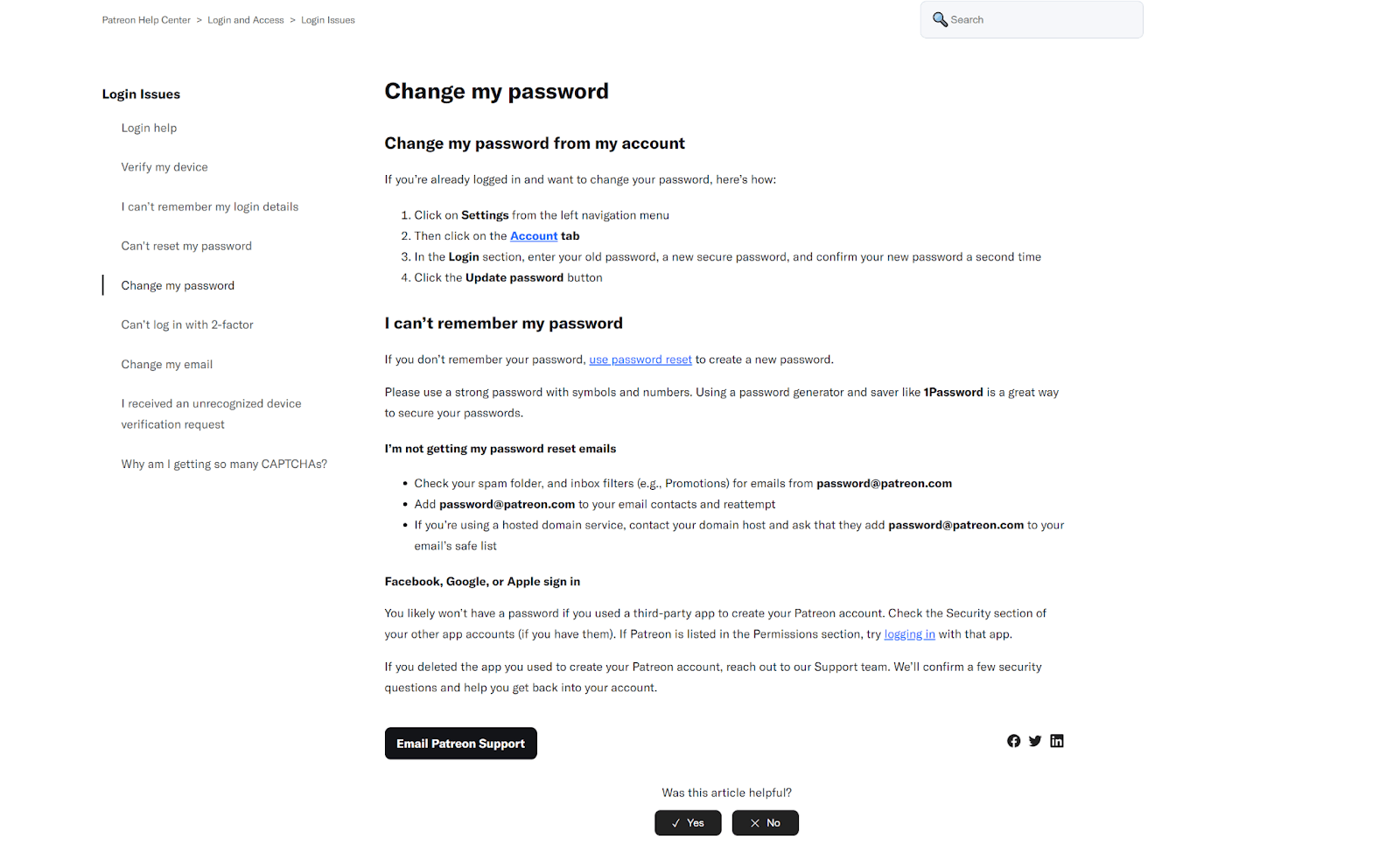
Source: Patreon
Every time a customer calls your support team, answering this question incurs a cost.
Your support reps need to take out the time to explain how to complete this task over and over again, and they get paid to do so.
However, once a user document in your knowledge base is written and paid for, it can instruct every future customer how to change their password without incurring any additional costs.
Because of this, the average cost of resolving a customer issue with your user documentation is dramatically lower than that of other forms of support.

Source: Archbee
It gets even better.
Seeing as your customers will prefer accessing your documentation to contacting your support (we explained why in the previous section), you’ll also be reducing the workload of your support team.
To get back to our example, if a certain number of users want to know how to change their password, but only a small percentage of them call your support team to ask, with the majority finding the answer in your documentation, you won’t have to hire as many support reps.
That’s because many support tickets won’t be created in the first place.
This benefit is also well documented. A supreme example can be found with Canopy, the digital safety app.
The company behind the app managed to cut their customer support response by a staggering 75% once they implemented a user documentation platform because they successfully redirected users from their support team to the documentation.
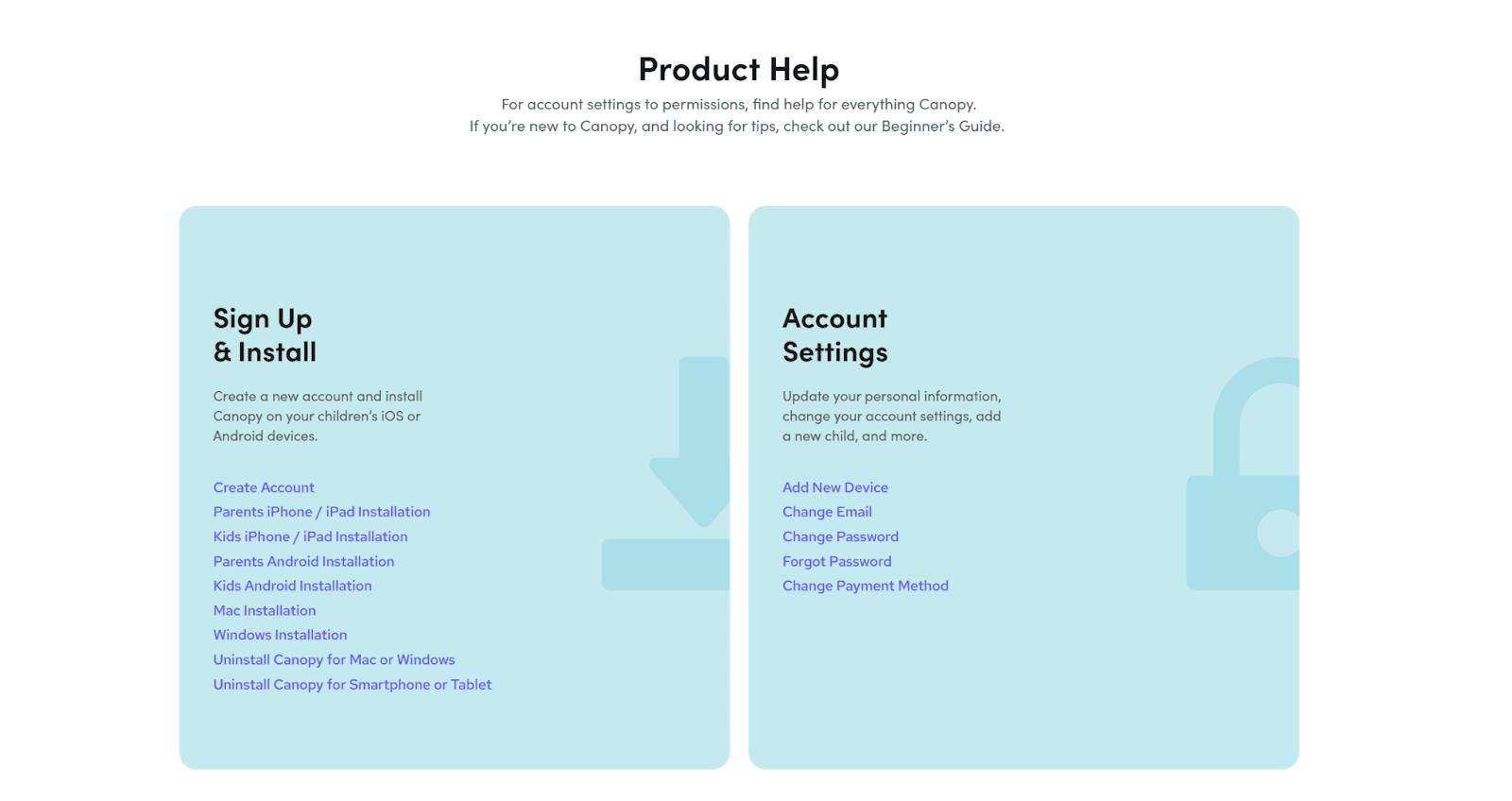
Source: help.canopy
To sum up, with user documentation, you’re offering quality support for your customers at a fraction of the cost of traditional customer service channels.
Now, this doesn’t mean support reps are obsolete—but offering more than one option for your users is a great way to keep costs down while maintaining a satisfied customer base, which makes user documentation worth the effort.
Benefits Customer Retention
When you’re operating on a subscription model, as SaaS businesses do, retaining customers is vital for the health and growth of your company.
The longer you can keep a customer, the more revenue they will bring to your organization.
That’s why SaaS companies usually set an explicit goal to keep customer churn (product abandonment) as low as possible.
But how do they do that?
According to some experts, such as Patrick Campbell, the CEO of ProfitWell, the company that offers pricing and retention solutions to SaaS providers, the number one cause of churn is attracting the wrong users.
As Campbell says:
“Closing bad-fit customers might juice your numbers in the short-term, but over time, those customers will be less likely to stay.”
That’s because these customers won’t find value in your product. It was never a good fit for them, and once they discover that, they’ll churn soon after.
At that point, all of the resources you’ve invested in signing them on will be lost.
More user documentation could be the answer to this problem.
Potential customers usually research products online before making the decision to purchase, and that includes your user documentation.
In fact, when considering a SaaS product, especially in the B2B space, users spend as much as 27% of their time researching it online, which is more than they spend doing other activities, such as participating in sales meetings with suppliers.
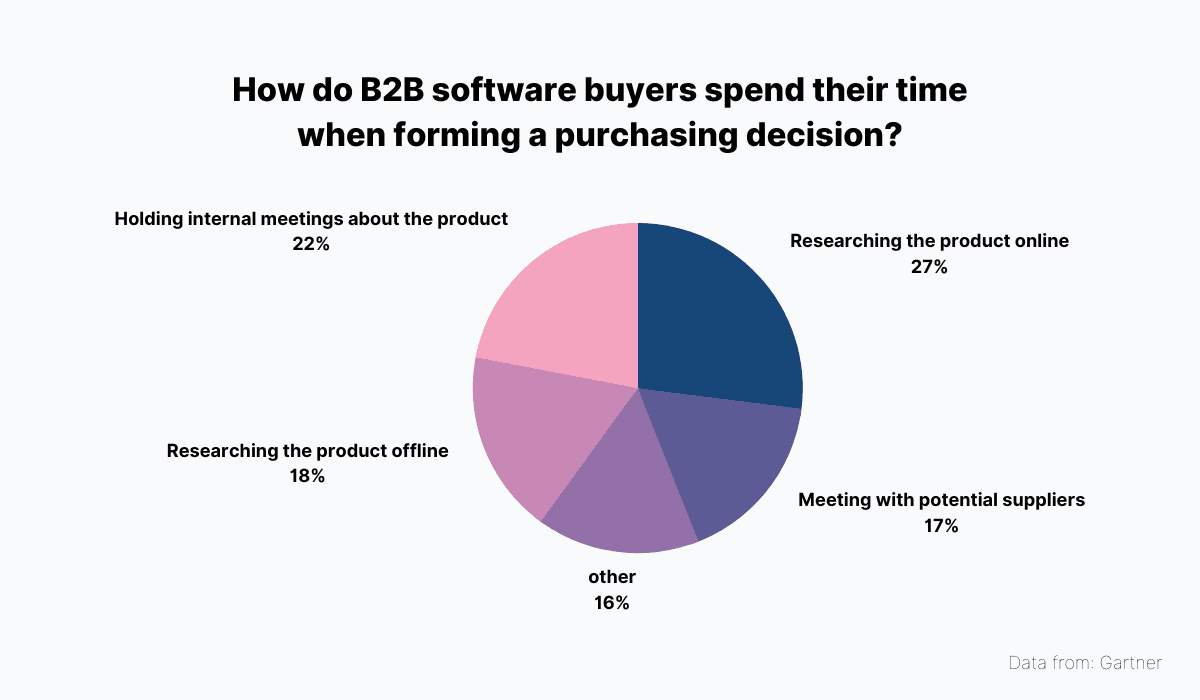
Source: Archbee
Therefore, the more data you can give them during this research phase, the more informed they’ll be when it’s time to buy.
And when users are well informed, the chances of them discovering that your product is a bad fit after purchase are much lower. That means your chances of retaining them are much higher.
However, even after doing copious research and signing up for your service, some customers may still feel like they made a mistake.
For example, they might not be able to figure out how to deploy an important feature or just feel that the product is too difficult to use, causing them to change their mind and churn from the service.
After all, reading about a product is not the same thing as actually using it.
This happens more than you’d think. Problems with customer onboarding are another major cause of churn.
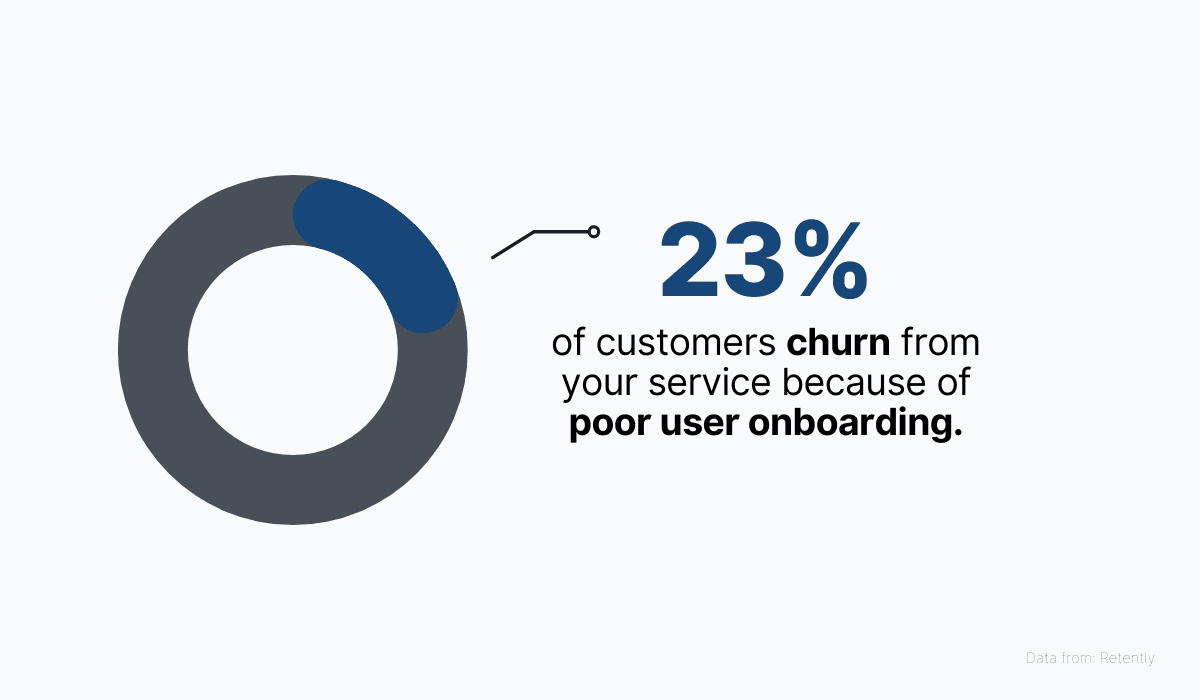
Source: Archbee
This means that SaaS companies can improve their retention rates by focusing more on supporting users during their first experiences with their product.
And user documentation can play a big role here.
Resources like getting started guides, feature tutorials, and troubleshooting sections can help users learn the basics of your product and provide them with solutions when they encounter obstacles on their journey.
Mailchimp’s user documentation is a good example of this. Its startup guide features every bit of information a new user might need, all in one place.
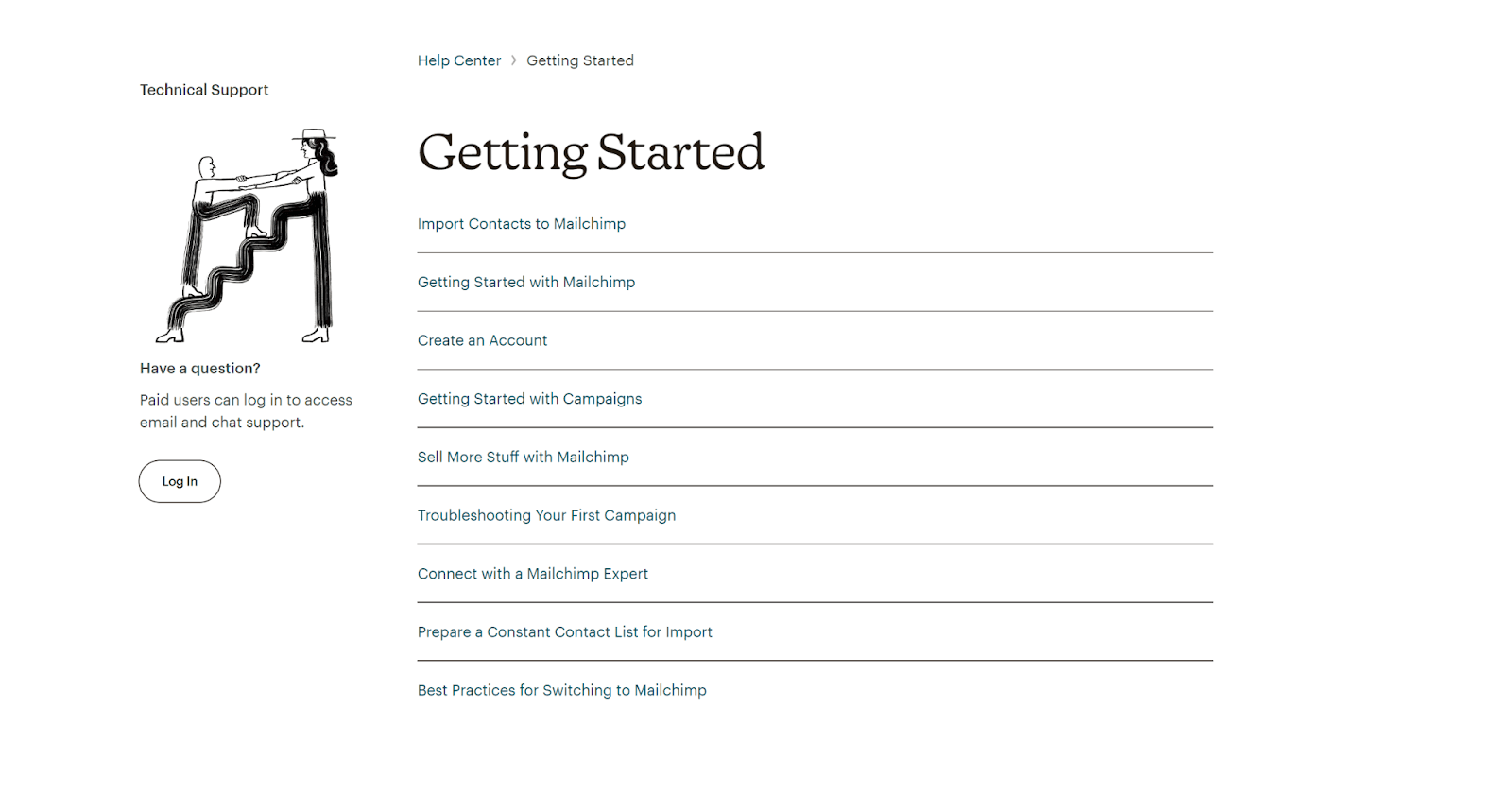
Source: Mailchimp
Remember, your retention rates will depend on how fast customers can find value in your software. Use your documentation to help them find it early on, or they might churn.
Helps Identify Areas for Improvement
The great thing about SaaS is that you’re always tweaking and improving your product to better fulfill customer needs and wishes.
But how do you find out what your customers really need or know which aspects of your product need to be improved?
There are many approaches, but the one that’s best suited for SaaS operations is tracking product metrics.
Some useful metrics for this purpose include:
- The number of active daily users, which can signal how useful the product is to users.
- Net promoter score (NPS), which measures customer loyalty and satisfaction.
- Usage and behavioral metrics, which tell software providers how users interact with their product.
We won’t go into the specifics of these right now but suffice it to say that product metrics paint a broad picture of how your customers are feeling about your product, indicating if you’re on the right track or if changes need to be made.
It’s a bit more difficult to get specific information from this data, such as whether your users find a feature difficult to understand or if there’s something missing that would make the user experience more comfortable.
However, depending on the technology you’re using to create and distribute your documentation, you might also be able to track the performance of your user documentation to get answers to these types of questions.
For example, Archbee offers powerful search analytics that can tell you which answers users are trying to find in your user documentation and how often people ask the same questions.
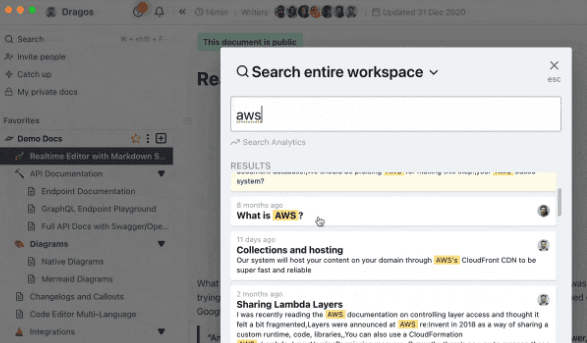
Source: Archbee
Do you see the value in that?
If users are often looking up instructions for a certain feature, then that may point to the conclusion that this feature is rather difficult to use.
Making it easier to navigate might be a good way to improve user experience and help users complete tasks more efficiently.
Similarly, if users are searching for something that you don’t offer within the scope of the product, such as an integration with a popular app, then that could be reason enough to include this new feature.
Clearly, there is a need for it.

Source: Archbee
The point is that in SaaS, your users are the ones who should be dictating how your software evolves and changes over time.
To really keep a finger on the pulse of your customer base, keep track of what it’s looking for in your user documentation.
The insights about the ways in which users interact with the product will surely be invaluable.
Improves Search Engine Optimization
As we said before, potential customers do research online when they’re trying to decide which products offer the best solutions to their problems and needs.
And in their research, they often visit search engines, such as Google and Bing, to find information and explore the products on offer.
Therefore, good SEO practices are vital for a SaaS business because they increase a product’s chances of being featured on the results pages of search engines.
A really important part of SEO is content marketing.
By offering quality, relevant user documentation, companies can signal to search engines, as well as users, that they’re top experts in their field and explain in minute detail how their product is used and what kinds of needs they fulfill better than anyone else.
Think about it.
Your user knowledge base is chock full of information about your software. It details how it’s used, who it’s meant for, and what goals can be achieved with it.
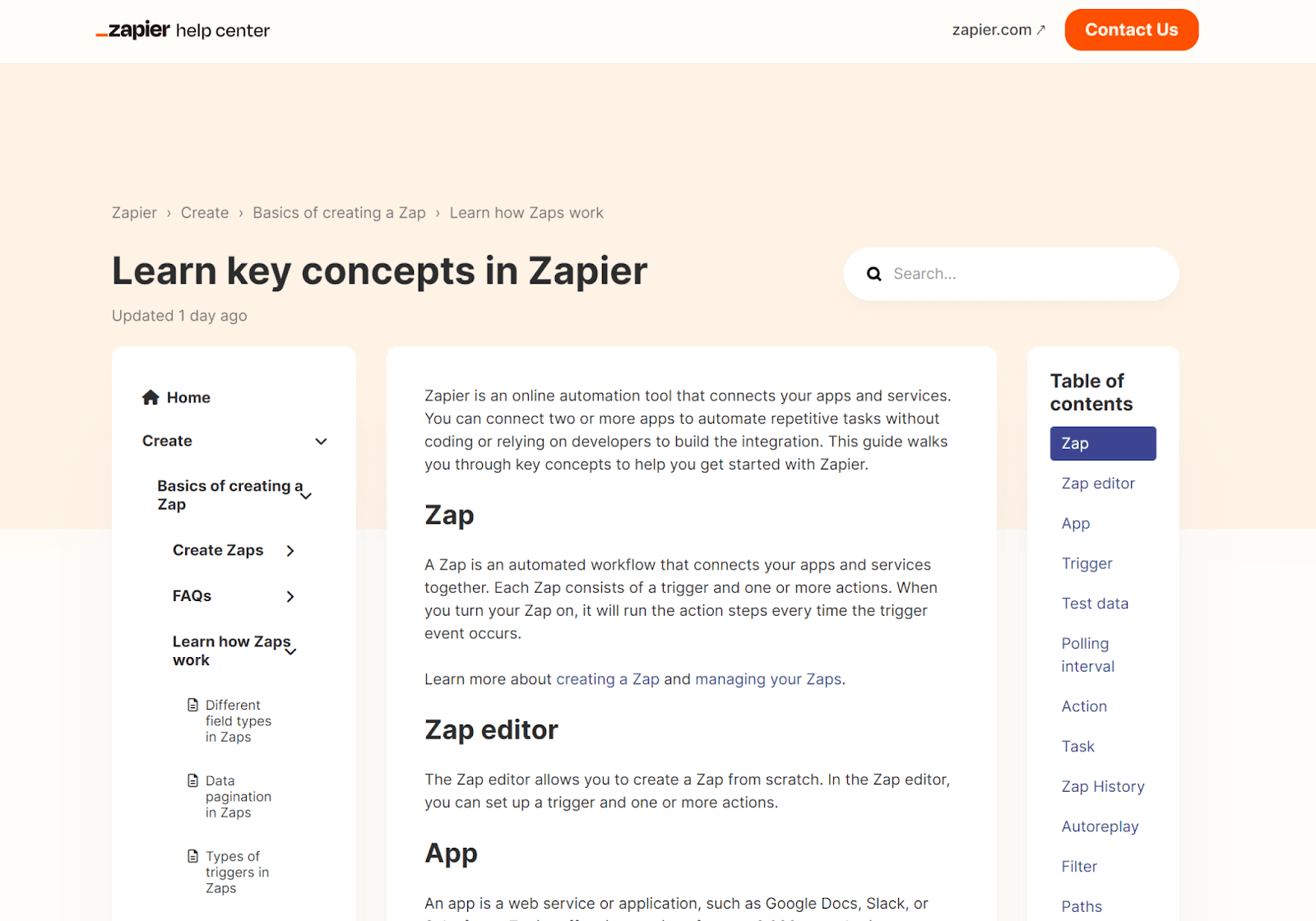
Source: help.zapier
This wealth of information helps search engines understand what you offer to users, helping them do a better job of recommending it to users who are looking for exactly what you’re selling.
They do that by positioning your product high up on the results page as a relevant answer to the user’s query.
For the content provider, this means more incoming traffic from search engines because visitors have an easier time finding their product when researching online.
And that traffic should also result in more signups down the line.
SEO is an essential part of the SaaS business model because most of us subscribe to software online.
Companies that offer ample quality user documentation have a chance to leverage it for better SEO results, which is another benefit user documentation brings to SaaS businesses.
Conclusion
By now, it should be quite clear that expertly written, intelligently distributed user documentation can be the secret sauce for SaaS success.
It has the power to keep users happy and encourage the growth of software companies, all at the same time.
It does that by benefitting almost every department at your company and ensuring every user has a smooth ride with your product.
So start finding ways to bring user documentation into the center of your business and watch your company grow.
Frequently Asked Questions
User documentation is one of the highest‑ROI growth levers in SaaS. It helps customers succeed without waiting, scales support efficiently, and builds trust.
- 24/7 self‑service that removes friction and wait times
- Lower cost to serve through ticket deflection on common questions
- Faster onboarding and time‑to‑value, boosting activation and retention
- Product insights from search and article analytics that inform UX and roadmap
- Stronger SEO from authoritative, keyword‑rich content that attracts qualified traffic
- Consistent guidance for customers and internal teams across sales, success, and support
Bottom line: clear, findable docs improve customer experience, reduce costs, and drive sustainable growth.
